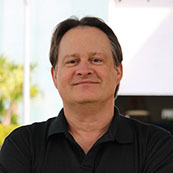Research In Action 2021

Harmful Algal Blooms: Can the Damage be Undone?
Jim Sullivan, Ph.D.
Executive Director,
FAU Harbor Branch Oceanographic Institute
Executive Director,
FAU Harbor Branch Oceanographic Institute
1. What can an individual do to help? Volunteer? Write our senator?
2. Will this presentation be shared?
3. Could you please highlight the impacts of HABs on livestock?
4. Which cyanobacteria affected the Palm Beach drinking water?
5. What do we have to do at the personal level to even help to prevent the algae, let alone to create an impact?
6. As open water swimmers and we enjoy the open water spaces we have in the intercoastal or ocean, how do we know if the water has the algae active?
7. Do “retired” septic systems get removed or simply filled in and left in place? If left in place, do they continue leaching pollutants?
8. Is there any existing or in-development technology that can filter HABs effectively?
9. How often is the bacteria pollution in ocean water measured and where can we see the results?
10. Is there data of people being sick from these type of algae contamination? Probably many people get sick and don’t go to a hospital and it is not detected.
11. I loved the figure showing the analysis of phosphorus sources with the largest impact for the Okeechobee water shed. What group is responsible for that analysis and is there a coordinated effort to replicate that analysis for all Florida watersheds and for all nutrient types?
12. What can we do to contact our local, state and leaders? Is there a specific bill or campaign to sign up or support?
13. People can participate in research studies that focus on human health!
14. What can the public do to influence the government to help get started on making changes?
15. The College of Nursing is initiating a HAB Biorepository (funded by FDOH) to help researchers with long-term effects studies.
16. Why can’t the fertilizers be banned from the state of Florida?
17. Are there any mitigation recommendations from the committee or are you only looking at prevention?
18. Are places like Wachodahatchee wetlands managed by the water dept, helpful for the algae issues?
19. How problematic is sargassum (seaweed)?
20. The use of fertilizers reminds me of food waste across countries. Most time, too much is lost. Are there requirements for farmers to report the efficacy of their treatments or how much nutrients they may be releasing?
21. How practical it is to remove existing phosphate from surface waters? Any treatments?
22. How does the individual test non-potable water (outside hose for yard) for algae? Too expensive, not reliable?